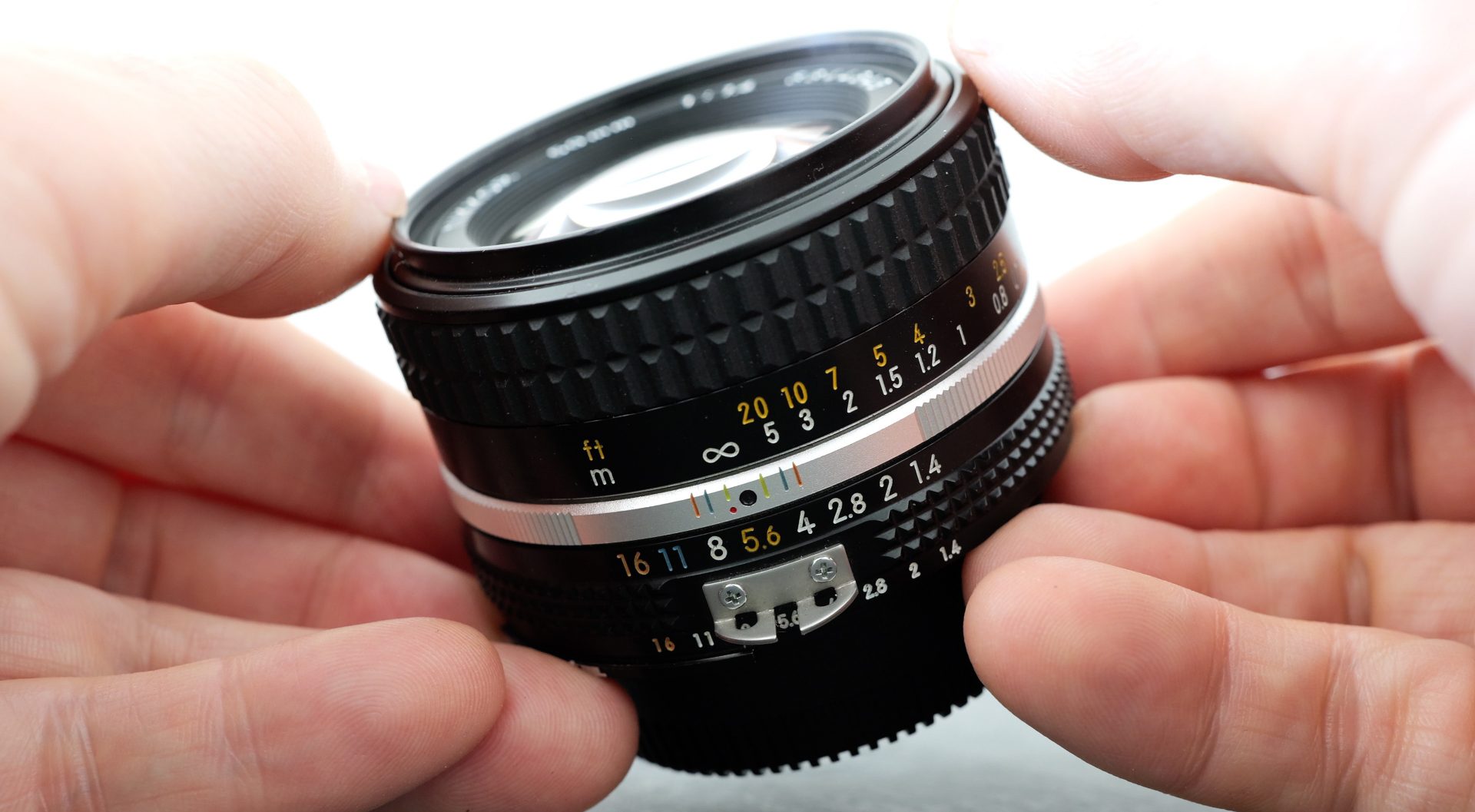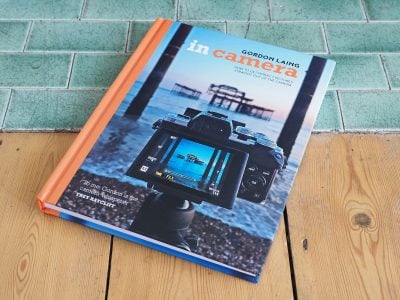Nikkor 50mm f1.4 AI-s vintage lens review
-
-
Written by Gordon Laing
Welcome back vintage camera lovers to another serving of gear nostalgia and today I’m trying out one of my most desired lenses as a teenager, that today is a perfect introduction for anyone to vintage optics.
It’s the Nikkor 50mm f1.4 AI-s, an almost ubiquitous standard lens for Nikon’s upmarket 35mm film SLRs in the 80s, and one that not only subsequently worked on Nikon DSLRs, but which can be adapted to almost any mirrorless camera from any brand.
Mount it on a modern camera and you’ll enjoy all manner of focusing assistance, video and stabilisation we could only dream of 40 years ago. In my video below, I’ll show you what it can do and why it’s still desirable over four decades after it first came out. If you prefer to read the written highlights, keep scrolling! I’ll also include various photos I took with the vintage lens adapted on a considerably newer Lumix S5 II body!
The 50 1.4 AI-s was introduced in 1981 and it was around that time I fell in love with it – and if I’m honest, the entire Nikkor lens catalogue. I loved the signature look and feel of these early to mid-80’s lenses, compact and superbly built, but sadly way out of reach for this teen of the time.
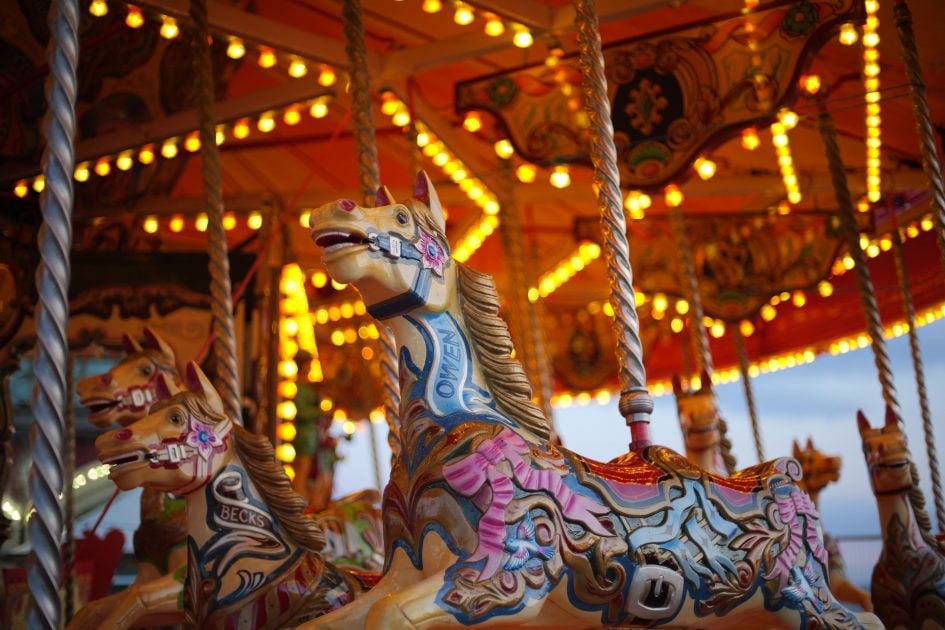
As I graduated from 110 cameras to my Dad’s Practica MTL3 with its meagre 50 2.8 lens, I could only look in envy at the Nikon F3 on shop shelves, always sporting a faster 50, and while the more common 1.8 was still brighter than mine, it was the higher-end 1.4 I truly aspired to. In the words of Wayne Campbell, it will be mine, oh yes, it will be mine.

Well dear viewer, let me tell you dreams can come true, although this one took four decades to realise. To be honest, I wasn’t actively chasing this particular lens, but it was always in the back of my mind, and during a recent trip to Tokyo, I was reminded of its allure. I was showing fellow YouTuber Richard Wong and film-maker Piotr Kwasnik around a wonderful used camera store in Akihabara called 2nd Base when a row of vintage Nikkor lenses called out to me.
I was actually looking for a pancake alternative to the recently launched Lumix 26mm f8 and was initially drawn to the Nikkor 45mm f2.8, but then I noticed a 50 1.4 at a bargain Y18,700, which at 2024 exchange rates worked out about $120 or £90. I bought both lenses, as well as an F to L-mount adapter for less than $275 or £215 in total, and if you’d like to see more of our evening browsing the used – and new – camera stores of Akihabara, check out Richard’s Tokyo camera shopping video on his channel.
I bagged a bargain in Japan, but this lens can generally be found for 100 to 200 dollars or pounds on the used market depending on condition, so let’s see what makes it special.
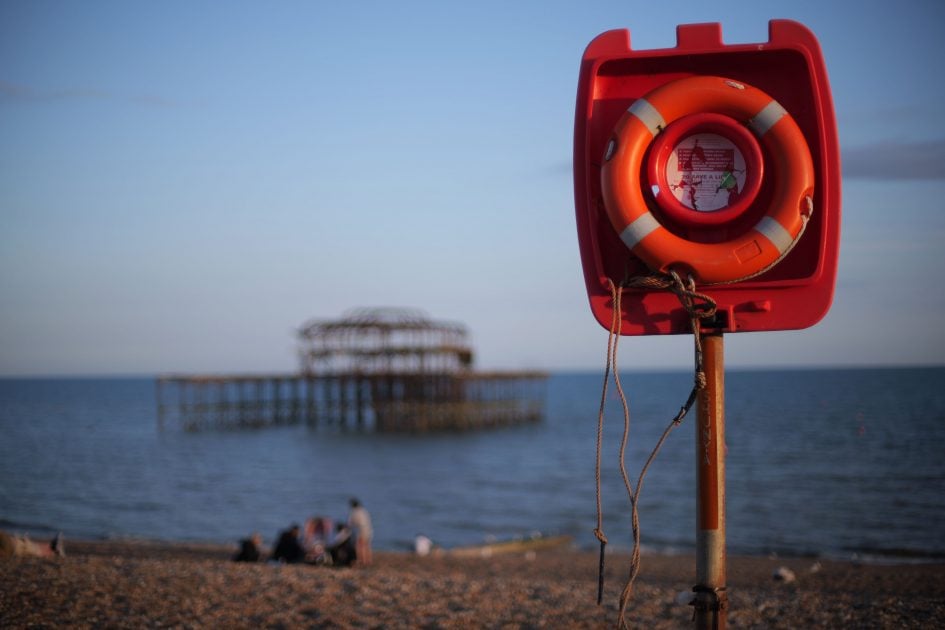
First things first: the Nikkor 50 1.4 AI-s may have been introduced in 1981, but its popularity saw it in production until 2005, an impressive 24 years, during which around three quarters of a million units were made. As such, there’s a lot of them out there, so you shouldn’t have any difficulty tracking one down. But how vintage will it actually be?
According to Roland Vink’s hugely comprehensive and invaluable Photosynthesis website, this lens started production with serial number 510-0001 in 1981, and ended at around 585-8632 in 2005. A subsequent smaller run started in 2006 with serial number 600-0001, producing around 25000 more lenses until this model was officially discontinued in 2020.
Given mine has a serial number of 584-4848, it was made towards the end of its first production life in the early 2000’s, but all share the same optical and mechanical design intro’d in the early 80s, itself actually based on a pre-AI version dating from 1976. So while my own lens is closer to 20 rather than 40 to 50 years old, it’s still a vintage classic.

Now if you’re used to using modern lenses, the first thing that strikes you about models from this era are their compact dimensions. As manual focus lenses, there’s no need to accommodate autofocus motors, and the approaches to optical construction were also often simpler without the obsession for perfection we have today.
Measuring 60mm in diameter and 40mm long, the 50 1.4 is comfortably smaller than any modern standard lens of this aperture, in fact more akin in size to a budget 1.8.
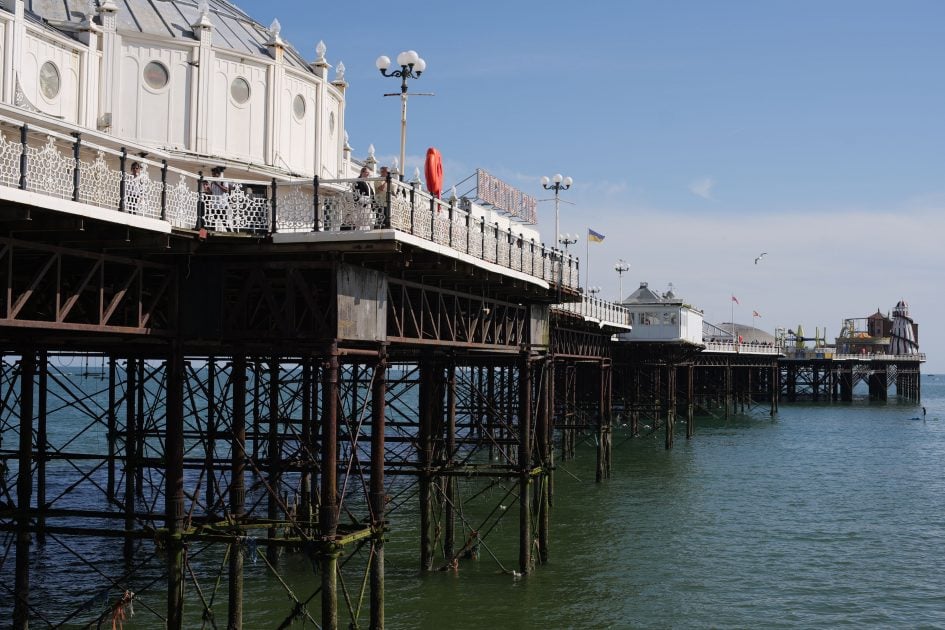
For comparison, here’s the Nikkor 50 1.4 on an S5 II body including an adapter which almost doubles its length. And now for the Lumix S 50mm f1.8, a modern alternative for L-mount with a slightly dimmer aperture, but a considerably larger barrel. The difference is quite striking, and if I had a modern 50 1.4 to match the aperture, it’d be even bigger.
But the second thing that strikes you is the feel of the lens in your hands. As soon as you pick it up, it feels a World apart from the plastic construction of modern lenses. Now I have nothing against the materials used today, but there’s an undeniable solidity to these all-metal lens barrels from the 80’s that just feel classier to me. Weighing 250g on my scales, it’s lighter than some 50’s and heavier than others, but packed into the small barrel gives it a reassuring density that’s rare on modern lenses.
As I show you around the lens, also look at the markings, not painted directly onto the barrel, but first etched before being filled with paint. In particular note the coloured aperture markings, with the smallest setting in orange indicating this is an AI-s lens, as opposed to earlier AI or non-AI versions which used blue for their smallest aperture value. In fact vintage Nikkor fans will know there’s a whole raft of clues to identify each type and era of lens, so I’ll mention a few here.
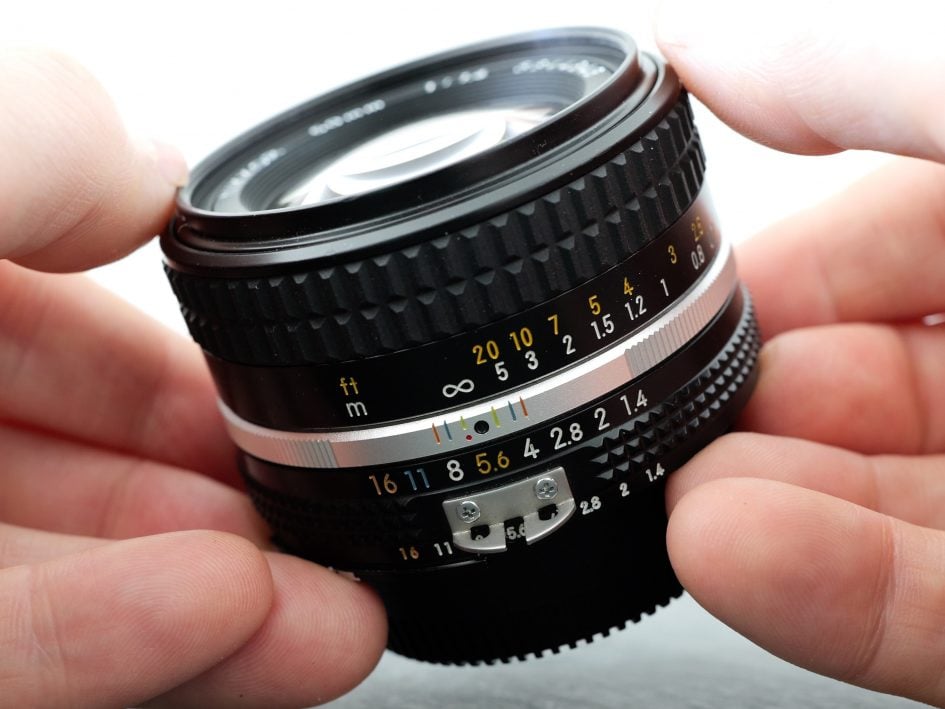
Starting at the mount, you’ll see a metal bayonet, held in place by three cross-head screws, compared to more screws on earlier versions. Two further AI-s clues here are the milled notch at around 9-o-clock on the flat mount surface, and the protruding tab close to the rear element, both used to identify the lens type to the body.
You may also notice the rear of the outer metal barrel is mostly flush with the silver flat plate, apart from a small ridged arc that protrudes a little further out. This is actually part of the aperture ring, and used to push a lever on the body to indicate the aperture value. It’s present on both AI-s and earlier AI lenses, and it may be possible to convert even older non-AI lenses by milling down the required section to create a ridge.
Also note the small spring-loaded stop-down lever that mechanically adjusts the actual aperture diaphragm itself when mounted on a compatible body. This allows the lens to be used in Program and Shutter Priority modes on bodies that support it, and I believe introduced on AI lenses. See how the diaphragm employs seven very straight blades as opposed to the more rounded blades on modern lenses. This in turn will mean more angular bokeh blobs, but also sharply defined diffraction spikes.

Aperture control or at least feedback on the selected value was a big part of Nikon’s lens designs, with newer models attempting to find better ways of performing it, while maintaining as much backwards compatibility as possible with older bodies.
One of the most obvious throwbacks is the silver metal semi-circle screwed into the aperture ring with a slot cut out. These prongs would line-up with a pin on older bodies to indicate the selected aperture value.
Notice the two holes, or nostrils on each side, another indicator of an AI-s or AI lens, as earlier non-AI versions were solid here. I believe these were introduced to allow more light to shine onto the tiny row of aperture numbers closest to the mount. These in turn were actually visible in a small window through the viewfinder of compatible bodies, neatly showing the aperture value during composition.
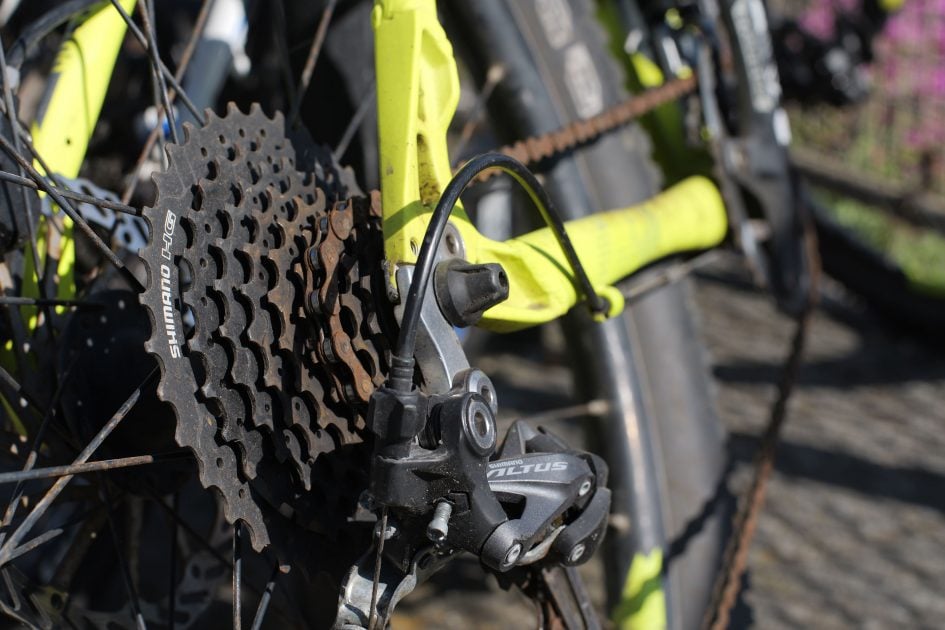
As for the actual operation, there’s just two controls, starting with the aperture ring that runs between f1.4 and f16 in one-stop increments with satisfying clicks between each.
Again notice the colour coding of the smaller values, which correspond with a depth-of-field scale on the silver ring alongside. This ring also has a small red dot to indicate where you should readjust the lens focus when shooting in infra-red.
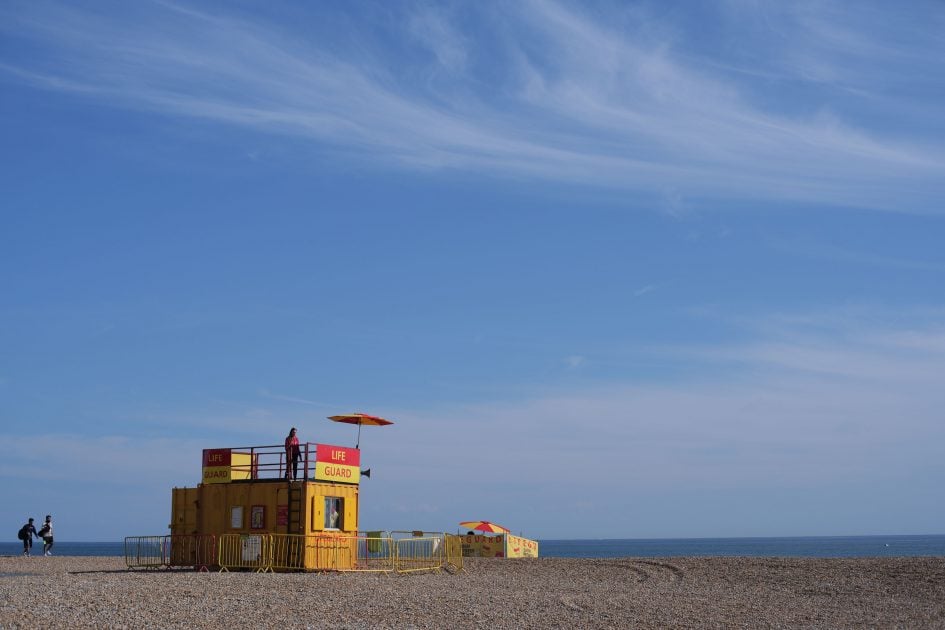
Which brings me to the manual focusing ring, arguably the best part of a vintage Nikkor lens from this era. The fairly short throw of about 130 degrees takes you from infinity to the closest marked focusing distance of 45cm or 1.5 feet with hard stops at each end. Distances in feet are marked in yellow, and in white for meters.
But the special part is how it feels: silky smooth and perfectly damped, allowing quick racking at one moment, before you zero-in with absolute precision – and remember it’s not motor-assisted like a modern lens, it’s directly extending the barrel and moving elements inside. I’m not exaggerating when I say I think this is one of the best manual focusing rings I’ve used on any lens, new or old, and I just adore it.

While this lens was designed to be focused using the optical viewfinder of a Nikon F-mount SLR, the experience is transformed by live view on a Nikon DSLR or adapted to a mirrorless camera, where you can exploit all manner of focusing assistance not to mention capture photos or video.
I bought a Nikon-F to L-mount adapter, allowing me to use it on a full-frame Panasonic Lumix S camera. Since the lens has no electrical connections nor autofocus, there’s no need for a more sophisticated adapter, just one that positions the lens at the correct distance from the focal plane.
To optimise any stabilisation within the camera, you’ll need to enter the lens focal length, but on the S5 II you can make a custom preset and select it as you power-up. This focal length is also stored in the image exif data, but only compatible Nikon bodies will report the selected aperture value.
Since the diaphragm is directly operated by the aperture ring though, it is possible to manually select any value, with most cameras happily metering the incoming light and automatically adjusting their shutters or ISO in the appropriate modes.
I mostly used Aperture Priority on my Lumix S5 II with the Nikkor lens and found it delivered a very usable semi-automatic experience. Sure, the camera had no idea what aperture I’d selected, but it could measure the resulting light and automatically set a shutter speed and or ISO to match.
As for focusing, I set the body to manual focus and enabled focus peaking, which outlines focused edges with a selection of colours. If you’re shooting lower resolution photo or video, peaking can be sufficiently accurate when viewing the whole image, but for the best results especially at higher resolutions, I’d recommend magnifying a portion to nail the focus. The combination of magnification and peaking, not to mention IBIS keeping the image steady as you focus, makes vintage lenses a joy to use today, and practical for those who are mostly used to modern autofocus systems.
So it looks and feels good, is easy to focus on modern bodies, but how does a 40 year old optical design measure-up today? Let’s find out by putting the lens through my usual tests, although remember my results are indicative of my particular sample and like all lenses, especially used older ones, there can be variations. It’s also interesting to remember you’re looking at pure optical quality alone here without any profiles or digital corrections applied. That’s part of the appeal of using vintage lenses originally designed for film.
So let’s start with my distant landscape scene, with Brighton Pier angled so that details run into the corners. I took this with the Lumix S5 II, using peaking and magnified assistance to focus the lens.
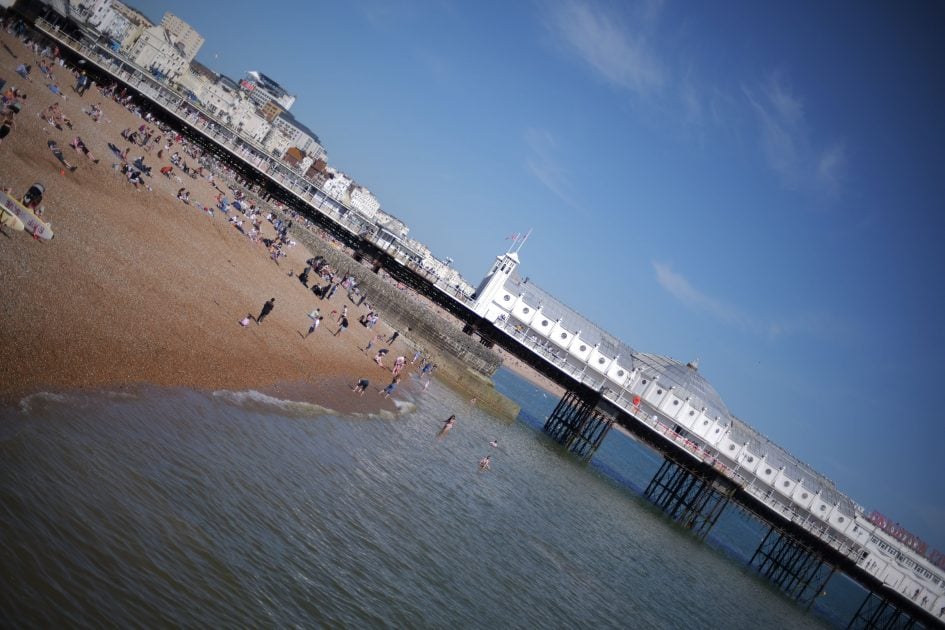
Above: You’re looking at the Nikkor 50mm f1.4 AI-s wide-open at f1.4, and if we take a closer look in the middle, you’ll see the finest details have become a little soft, there’s reduced contrast and also evidence of chromatic aberrations. This is all due to well-documented spherical aberrations for this lens, so it’s not unexpected, but look what happens when you close the aperture just one stop to f2. The contrast and sharpness both enjoy a substantial boost, while most of the colour artefacts have been eliminated. As I close the aperture further, the quality gradually improves, and between f5.6 and f8 is looking very sharp in the middle.
Now let’s return to the f1.4 version before heading out to the far corners where you’ll see the image quality is marred by softness along with darkening due to vignetting. Closing to f2 lifts some of that corner darkening, with the overall quality gradually improving as the aperture’s closed further. It’s looking pretty good at f5.6, but there’s further benefits to sharpness in the corners to be had right up to f11.
Out of curiosity, I thought it would be interesting to compare the Nikkor 50 1.4 AI-s against a modern 50mm lens. Since I’m testing with a Lumix body, I’ve gone for the Lumix S 50mm f1.8, a substantially larger lens with autofocus which costs around $400 or pounds. Panasonic and Sigma also make premium f1.4 50’s, but they’re much larger, heavier and more expensive, and I didn’t have either to hand, so the 1.8 will have to do here!
You’re looking at closeups of the middle from both lenses here at their maximum apertures, f1.4 for the old Nikkor on the left and f1.8 for the Lumix on the right, where the latter is noticeably sharper. As I close their apertures, the Nikkor gradually improves, while the Lumix remains fairly consistent, and by the time both are at f8, the vintage lens has almost caught up. Switching to their corners and gradually closing the apertures shows both lenses benefitting, but again the modern lens on the right is out-performing the vintage one on the left.
This shouldn’t come as a surprise, given the Lumix S 50 1.8 enjoys 40 years of optical advances over the vintage Nikkor, not to mention digital profiles on its side, but I think it’s useful to show the differences under a variety of conditions so you know the pros and cons of older lenses.


Above: So let’s move onto a portrait shot with the Nikkor 50 wide-open again at f1.4, and when viewing the whole image, you can see a nice balance of detail on my face with attractive blurring behind me. Taking a closer look reveals the same aberrations we saw earlier on the landscape scene at f1.4, but here with a human subject it’s more forgiving, and some may prefer the look over an often clinical modern lens. Given I’m the subject I’m reluctant to use the word dreamy, but you know what I mean.
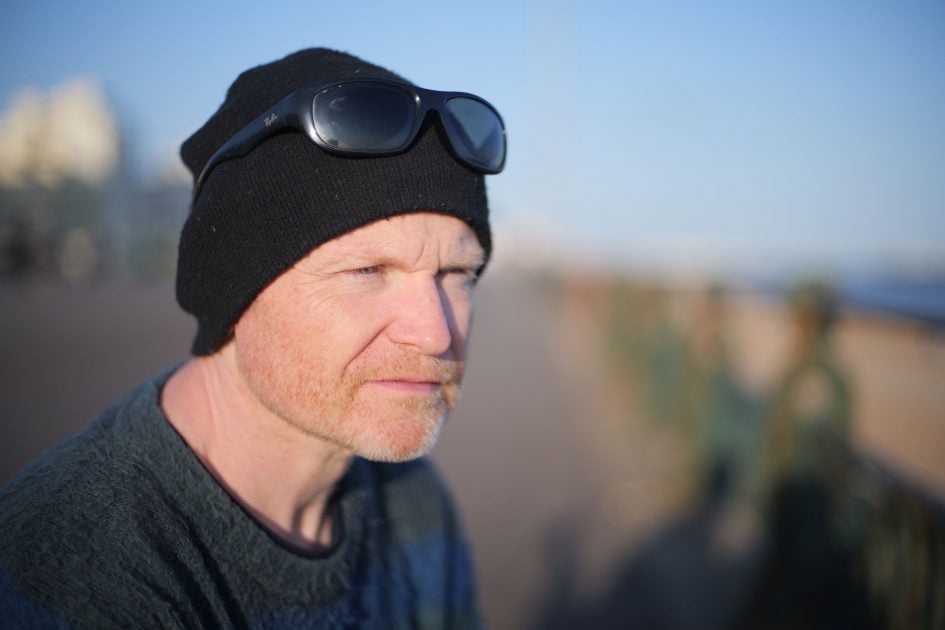
That said, if you close the aperture one stop to f2, you’ll again enjoy a decent boost in detail and contrast without losing too much of the bokeh behind me. Obviously some of the blobs have now taken on a geometric shape, but there’s still decent separation. Let’s now return to the f1.4 version on the left and compare it to the Lumix S 50mm f1.8 on the right, both wide-open, where you’ll see crisper details from the newer lens, but that’s not always a desirable thing on a portrait. I’ll now switch the Nikkor sample on the left for the f2 version, which again shows worthwhile improvements without becoming too unforgiving. The modern lens is sharper, but I like the look of the older one.
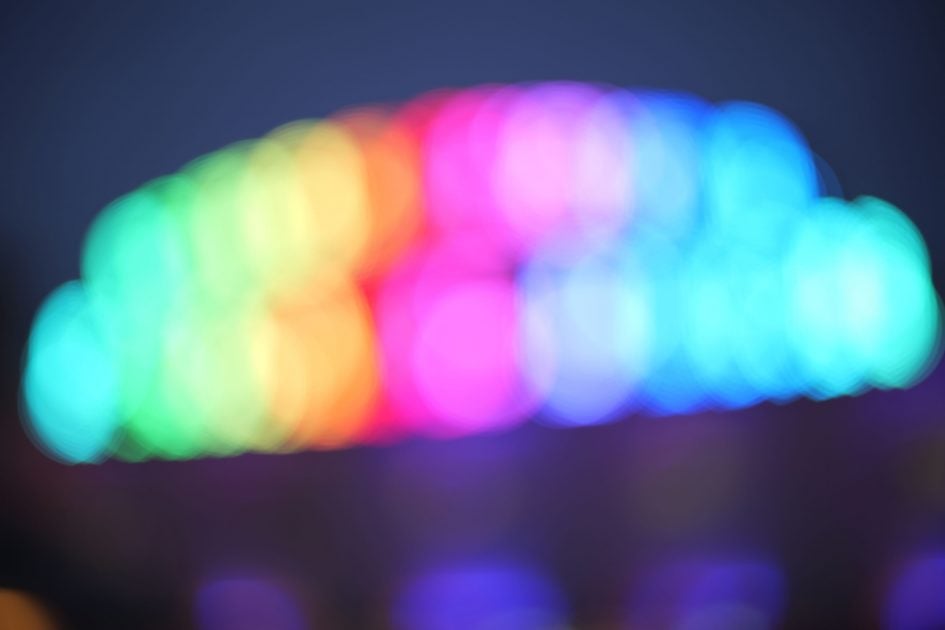
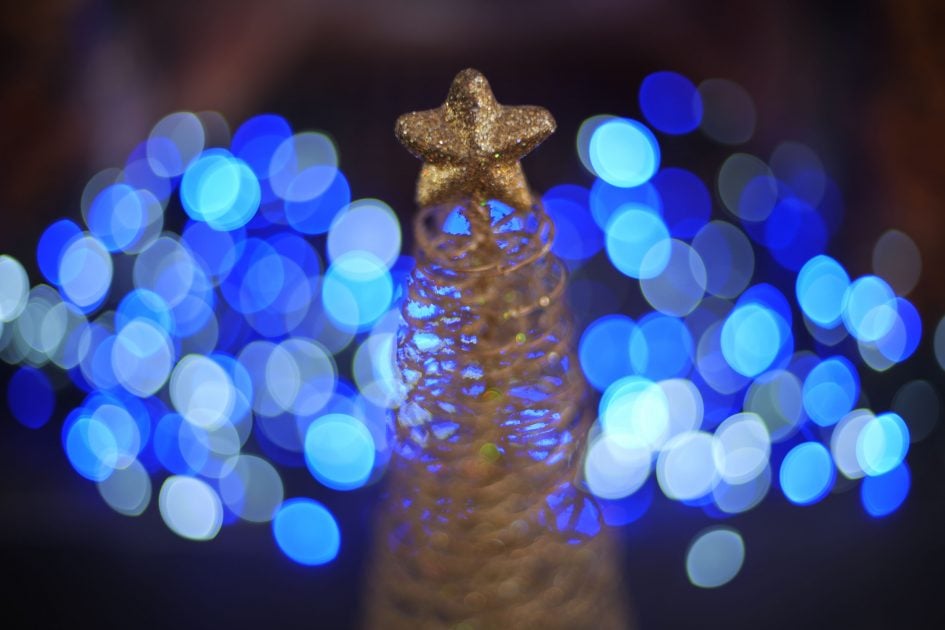
Above: Next for bokeh blobs from the closest focusing distance of the Nikkor 50, where at f1.4 you’ll notice the blobs become elongated towards the edges, but look closely and you’ll see they’re avoiding textures within and there’s minimal outlining too. I’d say it’s an attractive result.

Above: Close the aperture by just one stop though and you’ll immediately see the impact of the seven-bladed diaphragm system, with those straight blades transforming those blobs into well-defined heptagons, mostly uniform in size and shape. As I gradually close the aperture, this style of rendering really stands out as a difference with the more rounded blades of modern lenses, and it’s something you’ll either love or hate. But it’s certainly a distinct visual style, and I’m quite fond of the difference.
Let’s now put the vintage Nikkor on the left and the modern Lumix lens on the right, both wide-open at f1.4 and f1.8 respectively. Here you’ll see the blobs on the Lumix on the right are more rounded, but the rendering style is similar.
As I close their apertures though, the difference between the shape of their diaphragm systems becomes immediately apparent, and while you can spot the shape of the Lumix on the right, it manages to stay mostly circular, while the Nikkor unashamedly embraces the sharp geometry. This is a major difference between new and old lenses, so do you have a preference?
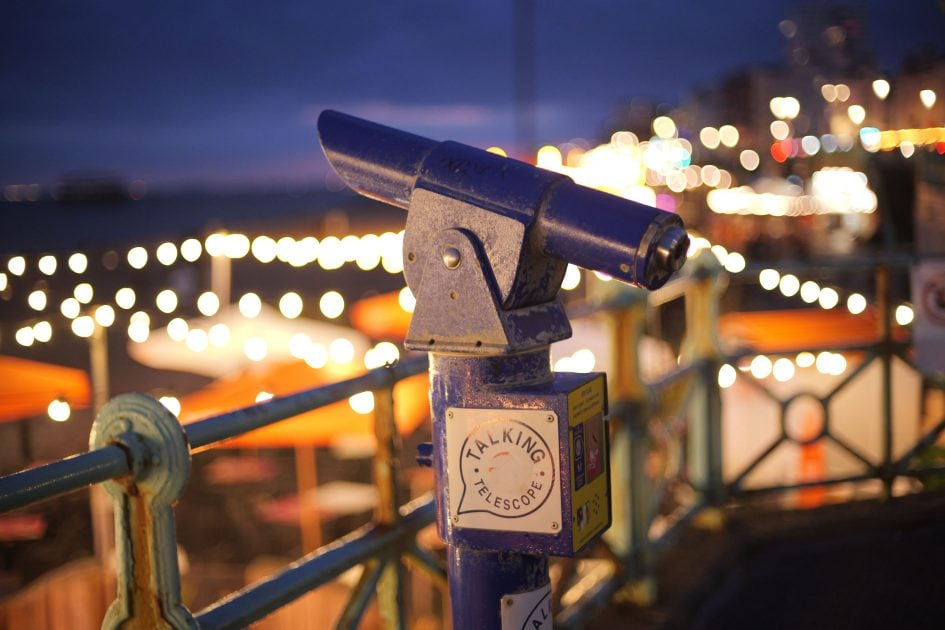
Another way to illustrate and embrace the bokeh of a vintage lens is for video. In my first clip, I’ll rack focus from infinity to the closest distance with the aperture wide-open at f1.4 where you’ll see the elongated blobs steadily grow. But now here’s how it looks closed one stop to f2, where the heptagon shapes gradually emerge in quite a stylish way.
I grew fond of this effect, and filmed a bunch of examples outside around Brighton at dusk. I really like the style of the background rendering, even if the bokeh blobs look a little sharply-outlined at times. These are all filmed at the maximum aperture, so no heptagons here, but with the smooth manual focus ring, it’s easy to pull focus from one distance to another.
These were also all handheld, using body-based stabilisation only. It’s crazy to consider a lens designed for use on a film SLR in the 80’s is now being used 40 years later to film 4k video on a camera with built-in stabilisation, and an EVF or flip-out screen with focusing assistance.
Nikkor 50mm f1.4 AI-s verdict
The Nikkor 50mm f1.4 AI-s was one of the most desirable standard lenses when it came out in 1981 and an ideal choice for anyone who wants to explore vintage optics today.
Of course it’s not as crisp as a modern lens, especially wide-open or in the far corners, but with the aperture closed even one stop, the quality becomes very respectable in the middle, and those extremes sharpen-up nicely as you close the aperture further. But like all vintage lenses, you’re choosing it more for its character, both optical and physical. With the aperture wide-open, the image may be a little soft, but it can lend a dreamy look to portraits, while delivering attractive bokeh and rendering.

Meanwhile at any other aperture setting, the diaphragm system turns those bokeh blobs into defined heptagons, and as it becomes smaller, any point sources of light enjoy 14 sharp spikes. Either give it a different look to modern lenses, whether capturing photos or video, and remember it’s pure optical performance without any digital correction.
But best of all is the design and build quality. The compact, all metal barrel looks and feels great in your hands, smaller than most modern lenses of this or even smaller apertures, complemented by classy etched characters and one of the smoothest manual focusing rings I’ve had the pleasure of using. It’s controls like these that remind me manual focusing can be a joy rather than a hindrance, especially combined with the assistance of a modern body. Every time I pick up this lens, I want to shoot with it, which says it all.
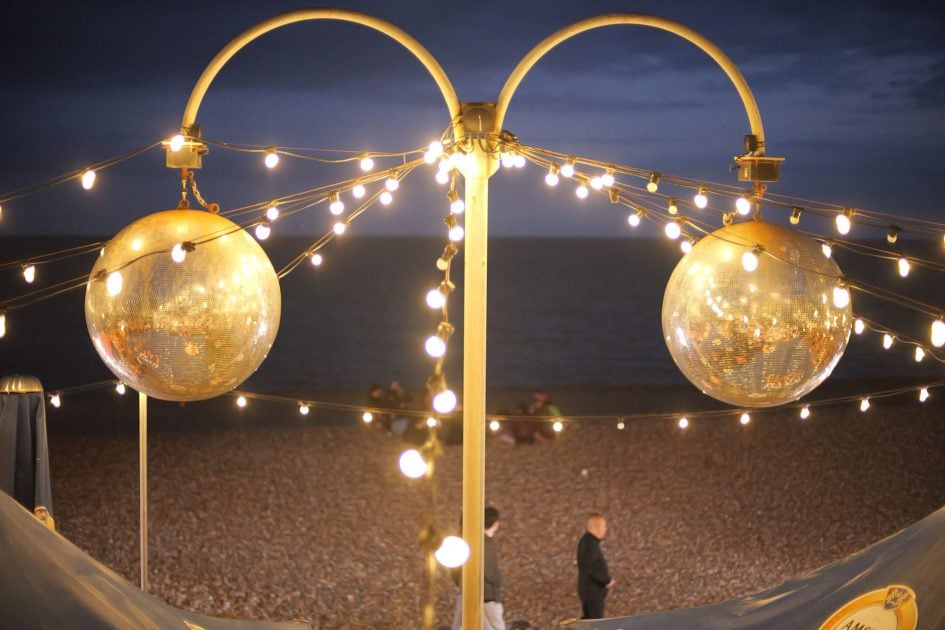
I think every photographer benefits from having at least one vintage lens in their collection, and a bright 50 is a perfect starting point. The beauty of adapting them to mirrorless is being able to choose from almost any brand, with excellent and often more affordable alternatives from Canon, Pentax and Olympus to name but three.
The Nikkor may be one of the more expensive options, but I chose it for its quality, the fact I’ve wanted one since childhood, and the chance for it to perform double-duty on both a modern mirrorless camera and mounted on an F3 film body should I ever find one at a decent price.
Check ebay to find vintage gear. Buy used cameras from MPB. Sell your used gear to MPB. Lost, deleted or corrupted photos? I recover mine with Stellar Photo Recovery. PS - if you enjoy my reviews, videos and guides, you can support me my treating yourself to a copy of my In Camera book, an official Cameralabs T-shirt or mug, or by treating me to a coffee! Thanks!